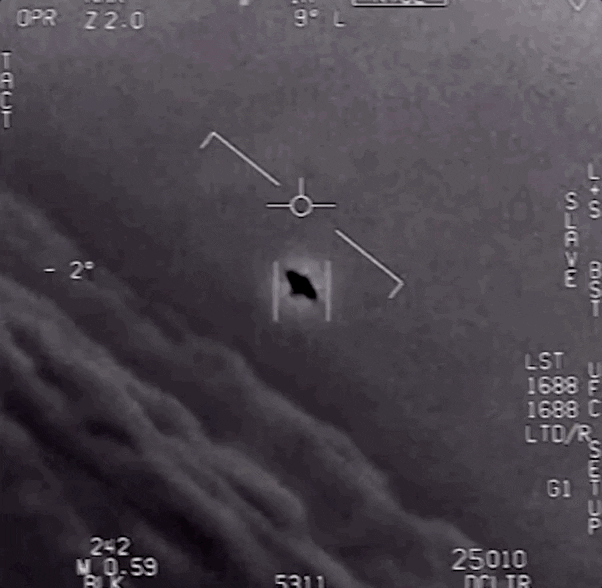This is followed by a solar location map; mathematical and physical unit definitions; a tutorial in human biochemistry, anatomy, and reproduction; information about the planet Earth and its structure; images of terrestrial geology, climatic regions, animal life, and plant life. There's also a large compendium on human life, activities, architecture, eating, technology, and music, as well as printed messages from US President James Carter and UN Secretary General Kurt Waldheim.
It will be a good 40,000 years before any of these probes comes within two light years of any other star systems and odds are that none will be found for millions or even billions of years.
AI ambassadors
But what does this slowpoke approach for sending messages have over light-speed radio signals? Not much at the moment, but while we're at the physical limits of what radio can do, interstellar travel still has a long way to go. At the moment, we're limited to using primitive chemical rockets or ion drives that aren't really suited to the task of jumping between the stars, but that could well change one day, if we're patient enough.

In 1964, Soviet astronomer Nikolai Kardashev came up with a way of classifying civilizations based on how much energy they are able to harness. A Type I civilization is limited to the power available on a single planet – about 4 X 1012 joules. A Type II would be able to use the output of an entire star, which comes out to 4 X 1026 joules. Meanwhile, a Type III civilization would have the output of a galaxy at 4 X 1037 joules.
The more power a civilization has at its disposal, the more efficient it becomes. One interesting point that SETI scientists have found is that when a culture reaches the point beyond a Type I civilization, the difference in efficiency between sending radio messages and sending unmanned probes becomes negligible.
In 1960, Ronald N Bracewell of Stanford University put forward a proposal for using robotic probes rather than sending radio messages as our way of opening contact with other beings. Let's look an updated version of his idea.
Imagine it's a few centuries from now when the energy problems of today seem as quaint as a flint or deer antler shortage in Neolithic Britain. Humanity now has so much surplus energy at its command that sending an interstellar probe seems no more farfetched than sending a probe to Pluto does in our day.
But these are far more advanced spacecraft than any we have today. They are larger and more powerful. They are self-refueling, self-repairing, and can even duplicate themselves as required using advanced 3D printing techniques. They are also fully autonomous with computers that have an almost organic level of artificial intelligence.
These probes aren't very fast, reaching only 10 percent of the speed of light, but they don't have to be. With no passengers or crew, they can afford to spend a few decades or even centuries getting to their destination. As they approach the candidate star selected by mission control, each probe has the ability to study the system in detail, identify the planets most likely to possess intelligent life, and make an assessment of whether to proceed or carry on to a more promising system.
If a planet does turn out to have a civilization advanced enough to make contact with, the probe would be programmed to discretely stand off and listen to radio, television, and data transmissions. Unlike trying to pick up signals from light years away, the probe could do so from only millions of miles or might even send in scouts to orbit the planet for a closer look and listen.

The Golden Record (Credit: NASA)
Already the advantages of sending out such a system become obvious. The Bracewell probe would be intelligent enough and programmed with enough precautionary algorithms to determine if the civilization in question is safe to contact or whether it could be more in Earth's interests to stay silent. It could even remain on station for decades or even centuries as it sends back reports to Earth.
The same watching brief might even apply if it finds a civilization that hasn't reached a high enough level of technology to communicate with. It could patiently wait and watch as it evolves, then decide whether to communicate as soon as it starts receiving radio transmissions. Or it could leave behind an artifact, as in 2001: a Space Odyssey, that would inform Earth if it was ever disturbed, while the probe itself moves on to more productive targets. Or it might duplicate itself and send the new one on.
If the probe did decide to make contact, it would be in a far better position than someone trying to start a conversation across 100 light years of space. For one thing, the probe would have no trouble making its presence known by blasting a powerful signal at the planet, perhaps re-broadcasting television programs with a six hour delay on the same frequency as the original broadcasts to make clear that this isn't some kind of an echo.

When contact is established, communications would be clear with a minimum of interference and responses would be received in real time. In addition, a probe orbiting the planet would have huge bandwidth at its disposal to send and receive a very large amount of data – much of it in the form of video.
It would also be a simple task for the probe to instruct the natives on how to build compatible transceivers for the most efficient exchanges or to speak directly to Earth. On the other hand, the probe could act as a gatekeeper by relaying messages to Earth and censoring information, like our location, if the indigenes prove untrustworthy.
Because the probe has artificial intelligence, it can adapt its communications to suit the recipient. It could indulge in true conversations with the natives, asking questions and being asked questions in turn as an exercise in both teaching and learning. It could even provide language lessons with suitable feedback. It might even be able to connect directly to the planet's version of the internet and use deep learning to better understand the culture or even to communicate directly with individuals.
Indeed, these exchanges could make such a probe, in the broad sense, profitable. Instead of blasting energy into space from Earth with no known return on the investment, the probe could send its findings to Earth much more economically. In fact, unlike radio signals, an autonomous probe program would continue operate long after it had been abandoned back on Earth.
It might even act as an insurance policy for our civilization. If Earth is destroyed, then at least our culture might live on – if only as a record, albeit an intelligent record. Or the probe could be programmed with a wide sampling of the human genome and supplied with information on how to construct a biological printer that would allow it to build human cells and clone them. Scientists are already doing this with simple viruses, so it may one day be possible with Homo sapiens. It may even be possible to bioengineer the ova at code level to adapt the colonists to their new environment.
Taking things a step further, there's no reason why the probe must be mechanical. Today, scientists are able to encode images and even videos on bacterial DNA. Perhaps, in time, some sort of microorganism could be developed with complex messages encoded on it as a form of self-replicating courier placed in small probes or turned into spores and carried on the solar winds into the galaxy. Maybe one day our first message won't be heard over the radio, but seen through a microscope.

Today, we have a lot more experience beaming messages into deep space as our unmanned missions probe the edges of the Solar System and beyond. We know more about how to send and receive data with a minimum of wattage, how to use tight-beam radio, and how to carry out precise tracking of space objects. We're even experimenting with laser communications in deep space and looking at new ways to send spacecraft to the nearest stars.
But whatever methods we may adopt in the future, our first messages are already on their way and we're waiting for the reply. The odds are long, however, and we won't hear much for about 50,000 years, so there's time to put the kettle on.


























